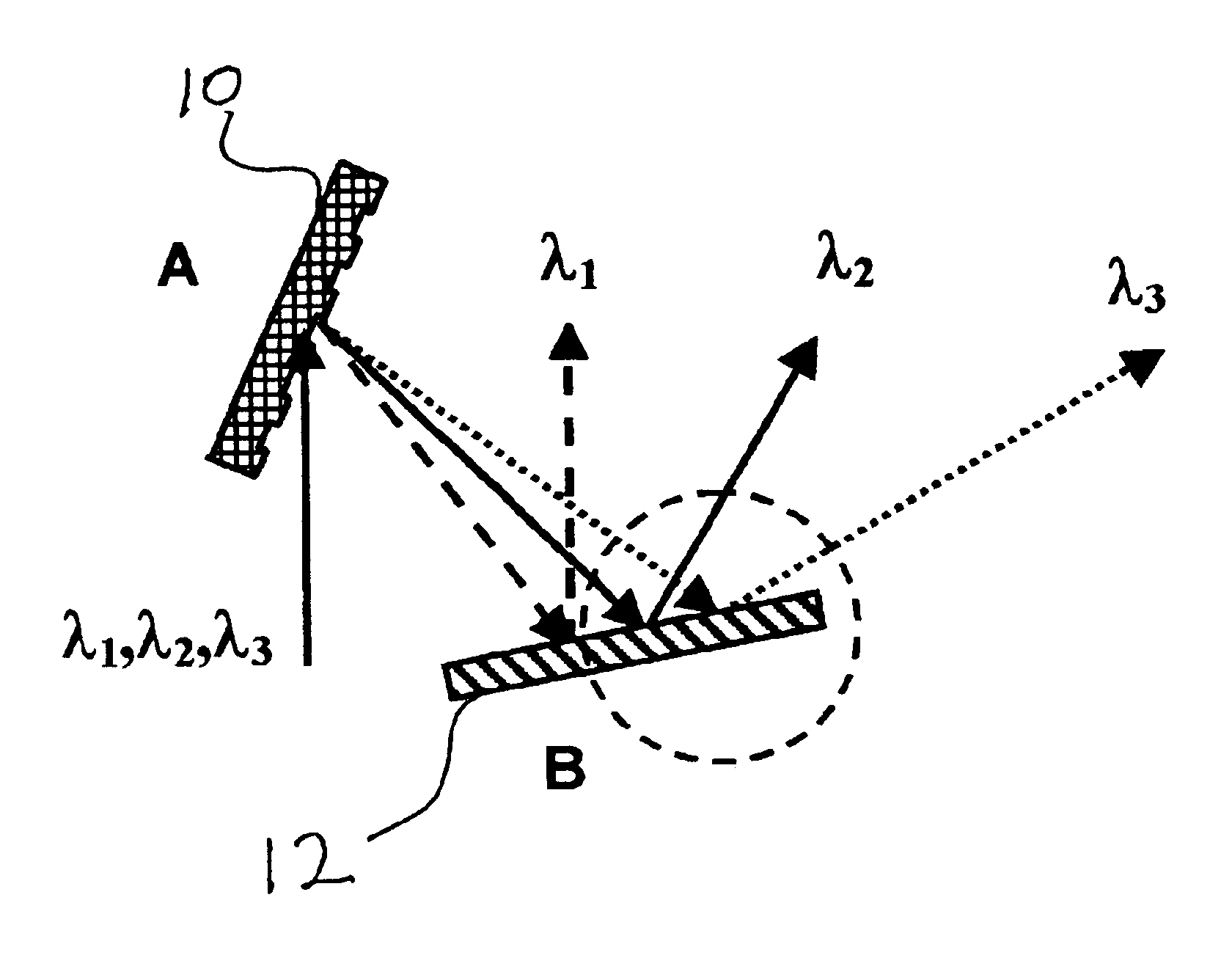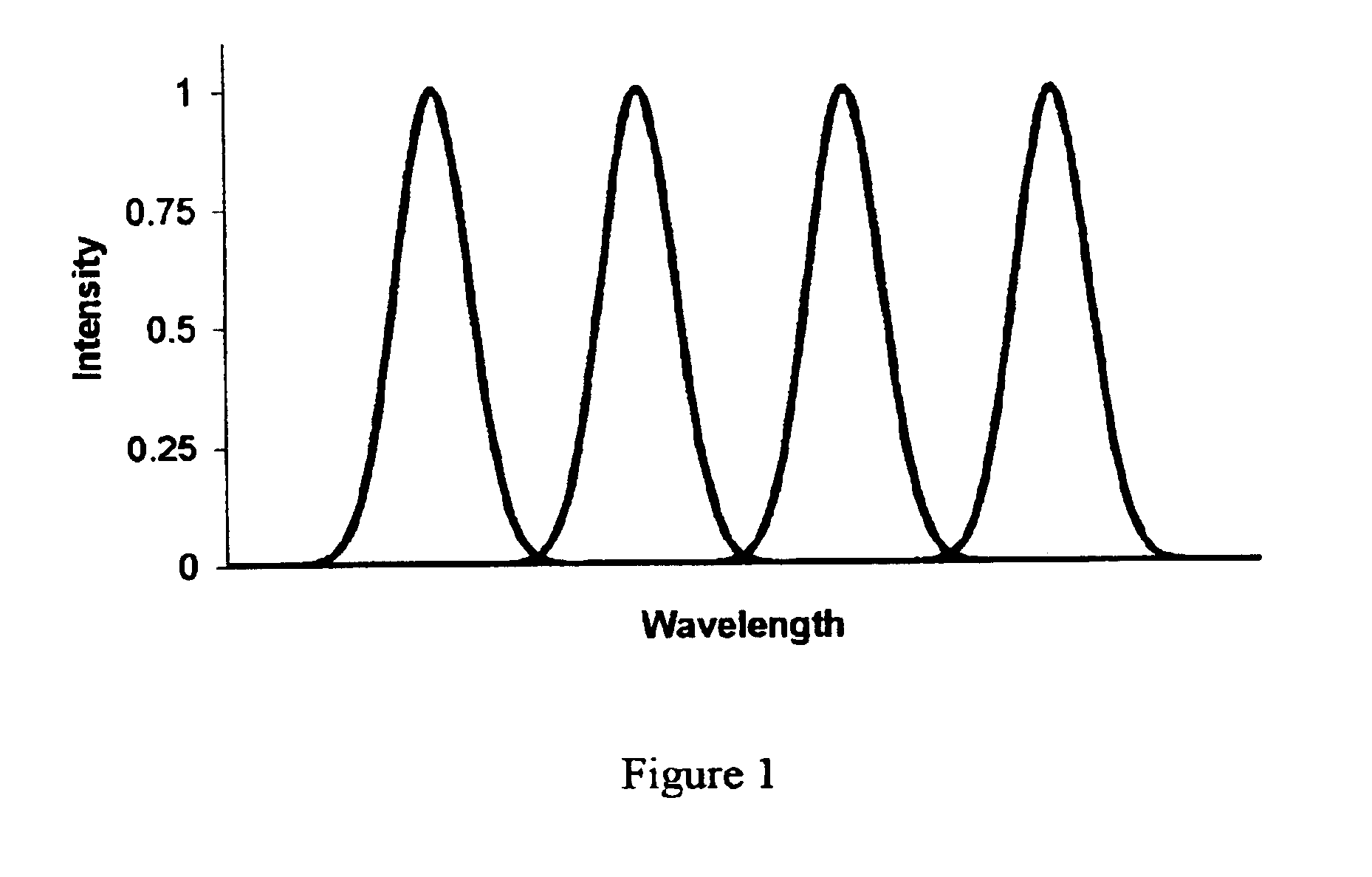Wavelength separation elements for dense wavelength division multiplexing systems
a wavelength division multiplexing and wavelength separation technology, applied in the direction of optical elements, multiplex communication, instruments, etc., can solve the problem of the theoretical limit of >10 tbits/s for a single fiber cable link, and the inability to fully utilize bandwidth
- Summary
- Abstract
- Description
- Claims
- Application Information
AI Technical Summary
Benefits of technology
Problems solved by technology
Method used
Image
Examples
Embodiment Construction
[0021]The invention consists of an optical multiplexer / demultiplexer that separates multiple channels of laser light, each with a different wavelength, co-propagating in an optical fiber, into multiple individual fibers (or the reverse operation). The multiplexing and demultiplexing operations are exactly opposite functions, and so the physics for each are the same, with only the operation being reversed, hence the demultiplexing will be considered here and represent both devices. The elements of an embodiment of the invention are:[0022]An optical fiber termination point;[0023]A chromatically dispersive element that redirects the angular profile of light incident upon it by an amount that is dependent on the wavelength, e.g., a diffraction grating;[0024]A second spatially dispersive element that uniformly redirects the angular profile of sections of the light incident upon it based on the spatial position of the beam incident on it, e.g., a mirror composed from multiple flat segment...
PUM
 Login to View More
Login to View More Abstract
Description
Claims
Application Information
 Login to View More
Login to View More - R&D
- Intellectual Property
- Life Sciences
- Materials
- Tech Scout
- Unparalleled Data Quality
- Higher Quality Content
- 60% Fewer Hallucinations
Browse by: Latest US Patents, China's latest patents, Technical Efficacy Thesaurus, Application Domain, Technology Topic, Popular Technical Reports.
© 2025 PatSnap. All rights reserved.Legal|Privacy policy|Modern Slavery Act Transparency Statement|Sitemap|About US| Contact US: help@patsnap.com



